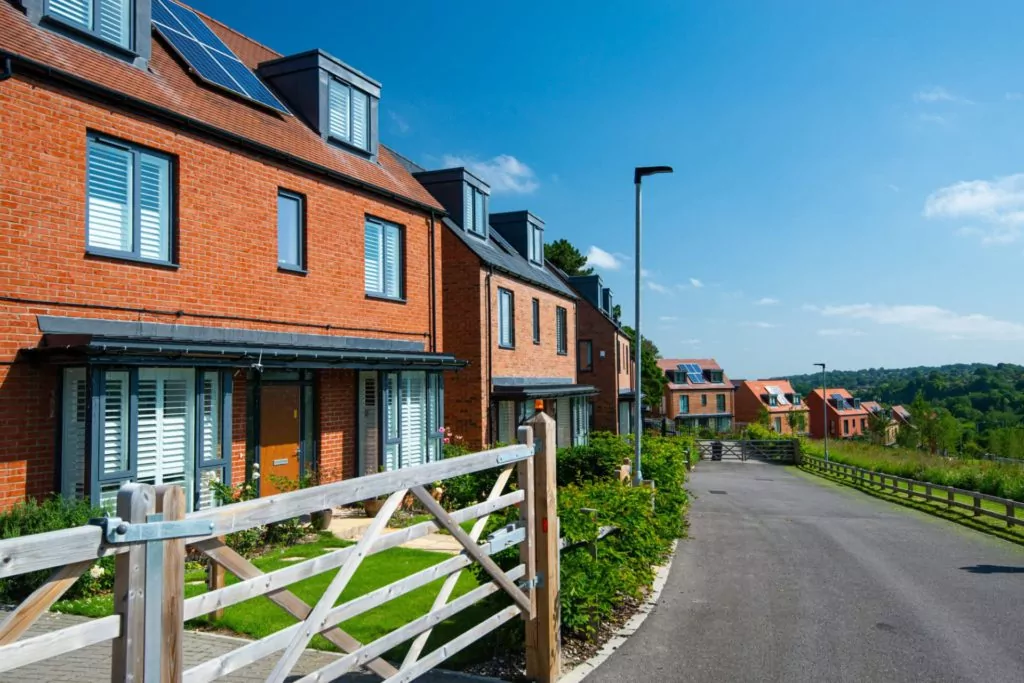
There are many routes that can be taken when re-purposing or building a residential development. All of these come with their own planning implications so be sure to consider this or seek advice as required.
Private Rented Sector
Private Rented Sector (PRS) is an umbrella term for privately owned property that is offered to the market as a rented or rentable product, ranging from single dwellings owned by individual landlords, some of which may not have been designed specifically for the rental market, through to professionally managed portfolios that have been purposely Built to Rent (see below).
Planning considerations:
From a planning policy perspective PRS properties may be treated either as the same class of use as residential units for sale on the open market, or depending on how they are arranged, may be treated as houses in multiple occupation (HMO) engaging the licencing regime for HMOs.
Build To Rent
Build to rent (BTR) is a distinct asset class within the PRS and is defined in national planning policy as:
"purpose built housing that is typically 100% rented out. It can form part of a wider multi-tenure development comprising either flats or houses, but should be on the same site and/or contiguous with the main development. Schemes will usually offer longer tenancy agreements of three years or more, and will typically be professionally managed stock in single ownership and management control".
Planning considerations:
As for PRS generally, BTR may be treated either as the same class of use as residential units for sale on the open market, or depending on how they are arranged, may be treated as houses in multiple occupation (HMO) engaging the licencing regime for HMOs.
BTR developments will usually be required to provide affordable housing unless a viability assessment indicates that this is not possible. The only national planning policy requirement in terms of affordable housing is that BTR units are provided as affordable private rented units, being let at 80% of open market rent inclusive of service charge.
The planning regime recognises that the financial model for BTR development is different from traditional "buy, build, sell" residential development and that it is not viable for BTR development to provide many of the planning obligations associated with traditional residential development.
In the absence of tenure restrictions set out in planning permissions or Section 106 planning agreements BTR units can be disposed of on the open market as freehold units or on a long lease, and cease to be BTR units.
Student accomodation
Student accommodation may be defined as "managed communal accommodation which forms a student's primary residence". Although houses may be rented by students and form part of the PRS residential sector, Purpose Built Student Accommodation (PBSA) is a use class of its own and is not within the same use class as PRS for planning purposes.
Planning considerations:
In some local authority areas there is a requirement that PBSA includes an element of affordable accommodation.
As with BTR developments the financial model for PBSA is different from traditional residential developments and as a result it is not viable for PBSA development to provide many of the planning obligations associated with traditional residential development.
As PBSA is a use class of its own in planning terms, any change of use to another form of residential use will require planning permission.
Co-living acoomodation
Co-living accommodation is usually a purpose built, managed development that includes a combination of personal and shared amenity spaces. This usually involves smaller-than-average private living accommodation alongside communal kitchens and living areas.
Planning considerations:
Co-living is a use class of its own and is not within the same use class as PRS for planning purposes.
In some local authority areas there is a requirement that co-living should include an element of affordable accommodation.
As with BTR developments the planning regime recognises that the financial model for co-living is different from traditional "buy, build, sell" residential development and that it is not viable for co-living development to provide many of the planning obligations associated with traditional residential development. Co-living development is treated in planning terms as similar to student accommodation.
As co-living is a use class of its own in planning terms, a change of use to or from another form of residential use will require planning permission.
In conclusion
Whichever the residential use you propose, there will be many planning and commercial considerations as to which is best for a development proposal or the re-purposing of existing development. An understanding of these matters at an early stage will ensure a successful outcome.
Want to know more?
If you have any questions or would like support with planning for residential developments, please get in touch.










